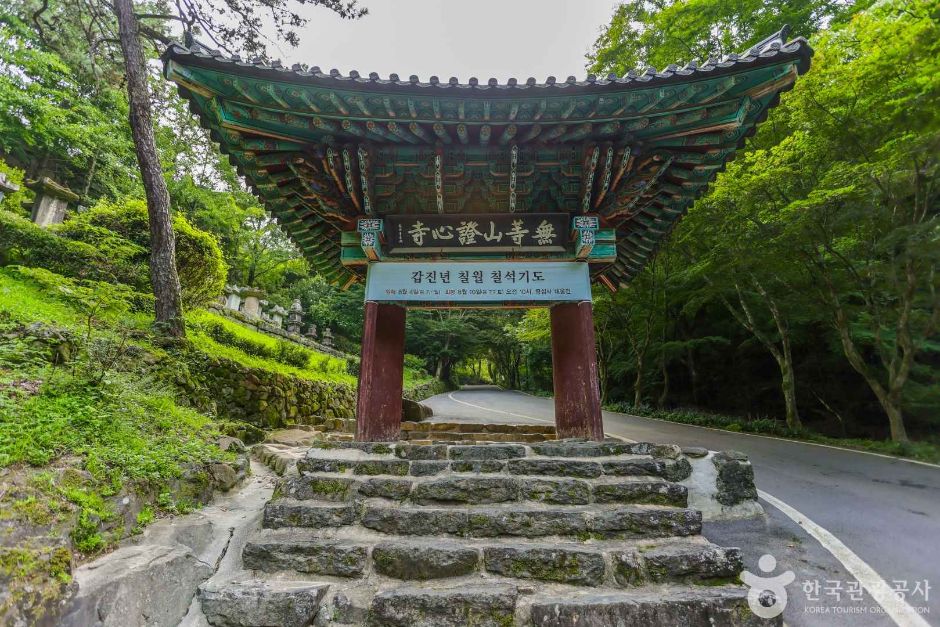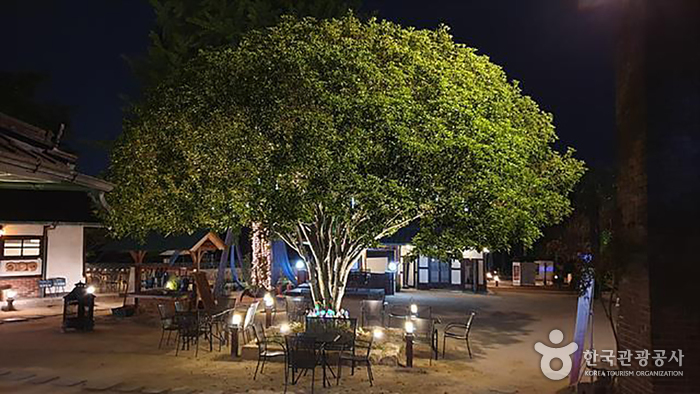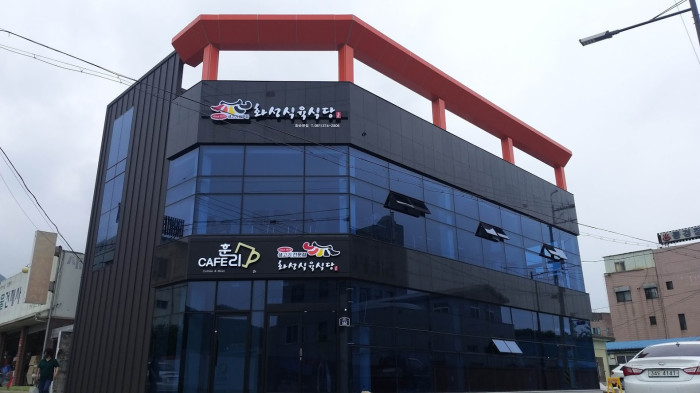Sane Flower (산에는 꽃이피네)
12.4Km 2025-07-18
20-1, Dongnyeok-gil, Naju-si, Jeollanam-do
Hotel the Spot [Korea Quality] / 호텔더스팟 [한국관광 품질인증]
12.5Km 2023-12-07
32, Amkor-ro, Buk-gu, Gwangju
+82-62-971-1362
The Spot Hotel in downtown Buk-gu, Gwangju, Jeollanam-do, offers travellers good facilities and a choice of rooms. For example the studio suite includes cooking facilities, and the super king room has a super king-size bed and is ideal for families with young children. There are also rooms with a bathtub. The hotel offers free breakfast, a pay-for laundry service, valet parking and a concierge service. Guests can stroll in the nearby park or along Yeongsan River opposite the hotel.
Doraemi House (도래미하우스)
12.6Km 2025-07-18
18-26, Dongnyeok-gil, Dado-myeon, Naju-si, Jeollanam-do
Templo Jeungsimsa en Gwangju (증심사(광주))
13.0Km 2025-07-02
Jeungsimsa-gil 177, Dong-gu, Gwangju
3917 Majung / 3917 마중
13.3Km 2025-08-13
42-16, Hyanggyo-gil, Naju-si, Jeollanam-do
Located in Gyo-dong, Naju-si, Jeollanam-do, 3917 Majung is a cultural space combining a hanok (traditional Korean house) cafe, modern cultural experiences, and hanok guesthouse. The name “3917 Majung” refers to its goal of “welcoming (majung) the modern culture of Naju in 1939 anew in the year 2017.” Spread out on a wide land area of 13,223 m2 are four buildings of Nanpajeong, Sarangchae, Mokseowon, and Siseoheon. All buildings take after the unique combination of Japanese- and Western-style housing commonly seen in the late Korean Empire period.
Nanpajeong is a pavilion constructed during mid-Joseon period, named after its most famous guest Jeong Seok-jin (pen-name: Nanpa), a scholar who led an uprising against Japanese imperialism in late Joseon period. There are two ondol (under-the-floor heating system) rooms in total, separated by a central wooden-floor hall (daecheong), one supporting 3 to 4 guests, one ideal for 2 to 3 guests. The restroom, which is also fitted with a shower booth, is located outside the building.
Eunhaengmok Room 1 and 2, which are housed in the Sarangchae building, are tatami rooms with balcony. Sarangchae’s shower and restroom is located in the building. Mokseowon is likewise made up of three tatami rooms, separated by open floor space and an attic. The shower and restroom is located outside the building. Siseoheon houses a 4-person room and the largest room in the complex, capable of supporting more than 10 guests. There are 2 restrooms and 2 restrooms with shower facilities, making the building ideal for group events.
Family Land de Gwangju (광주패밀리랜드)
13.8Km 2023-01-04
Uchi-ro 677, Buk-gu, Gwangju.
+82-62-607-8000
Family Land de Gwangju es un parque de atracciones equipado con docenas de excitantes juegos e instalaciones recrativas como una piscina, una pista de hielo y una pista de trineos. Es el parque más grande de la región de Jeolla-do. Se ofrecen entretenimientos diseñados especialmente para parejas, familias y niños.
Templo Manyeonsa (만연사)
14.4Km 2025-08-19
Jingak-ro 367, Hwasun-eup, Hwasun-gun, Jeollanam-do.
Se cree que este templo fue fundado hacia el año 1208, los tiempos del rey Heejong, de la dinastía Goryeo. Hasta la Guerra de Corea se conservaban varios de sus pabellones más antiguos, pero muchos fueron destruidos. Recién en 1978 se levantaron nuevamente varios de ellos. En las cercanías, a exactamente 2 km hacia el este están las Cascadas Manyeon y hay un bosque que atrae a muchos turistas de pícnic y campamento.
Estación de Naju (나주역)
14.4Km 2021-04-09
Najuyeok-ro 56, Naju-si, Jeollanam-do.
La Estación de Naju forma parte de la línea Honam que recorre por la región de Jeolla-do. La estación se localiza en Songwol-dong, de la ciudad de Naju, en la provincia de Jeollanam-do.
La antigua Estación de Naju, localizada en Jungnim-dong, fue el punto de inicio del Movimiento de la Independencia de los estudiantes de Gwangju en 1929, que empezó como resultado de los conflictos entre estudiantes coreanos y japoneses que solían llegar a Gwangju en tren. Este significado histórico hizo retrasar la relocalización de la Estación de Naju. Con la apertura parcial de la línea Honam, el día 10 de julio de 2001, la Estación de Naju se integró con la Estación de Yeongsanpo y se trasladó a su actual ubicación enfrente del Ayuntamiento de Naju. Las instalaciones de la antigua Estación de Naju eran demasiado viejas y el edificio empezaba a ser pequeño para dar cabida al número de pasajeros de la región, por lo que fue la Estación de Yeongsanpo la que empezó a cubrir la demanda de pasajeros.
Después de la integración de las dos estaciones, todos los trenes regulares en la línea Honam, así como algunos de los trenes de alta velocidad, hacen parada en la Estación de Naju.
Monumento Chungjangsa (충장사)
14.8Km 2023-02-09
Songgang-ro 13, Buk-gu, Gwangju
Hwaseong Sigyuksikdang (화성식육식당)
15.1Km 2021-03-20
162, Chilchung-ro, Hwasun-gun, Jeollanam-do
+82-61-374-2806
A restaurant where you can eat fresh raw meat. This restaurant's signature menu is grilled beef. This Korean dishes restaurant is located in Hwasun-gun, Jeollanam-do.

![Hotel the Spot [Korea Quality] / 호텔더스팟 [한국관광 품질인증]](http://tong.visitkorea.or.kr/cms/resource/77/2651577_image2_1.jpg)



 Español
Español
 한국어
한국어 English
English 日本語
日本語 中文(简体)
中文(简体) Deutsch
Deutsch Français
Français Русский
Русский